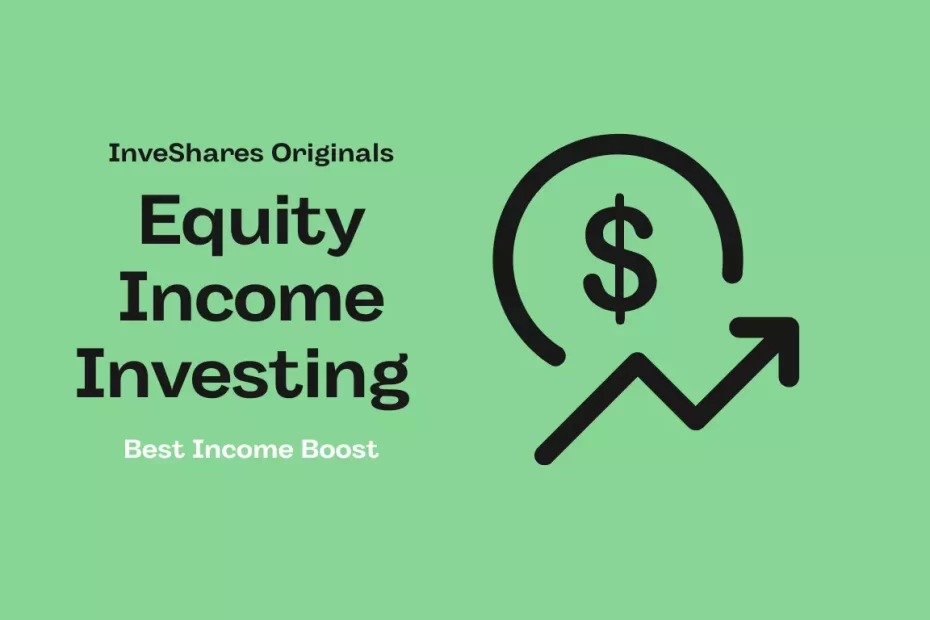Introduction: “Maximizing Income with Equity Income Investing”
• Definition of equity income investing
• Why equity income investing may be a good fit for certain investors
• The potential benefits of equity income investing, including steady cash flow and the opportunity for capital appreciation
Equity income investing is a type of investment strategy that focuses on generating regular income through the ownership of dividend-paying stocks, real estate investment trusts (REITs), and other types of income-generating securities. This approach may be a good fit for investors who are looking for a way to supplement their income, or for those who want to build a portfolio that generates steady cash flow without the need for constant trading. One of the key benefits of equity income investing is the potential for both income and capital appreciation, as the value of the underlying assets may increase over time in addition to providing regular dividend payments. If you’re interested in learning more about equity income investing and whether it might be a good fit for your financial goals, read on for a deeper dive into the ins and outs of this popular investment strategy.
While equity income can offer a number of potential benefits, it’s important for investors to understand the risks involved as well. Economic downturns and company-specific risks can both impact the financial health of the underlying companies and potentially lead to dividend cuts or the suspension of dividends altogether. It’s also important to be aware that dividend payments are not guaranteed and can be changed or discontinued at any time. Despite these risks, equity income investing can be a viable option for investors who are willing to carefully evaluate the financial health and dividend history of potential investments, diversify their portfolio, and regularly review and rebalance their holdings.
How Equity Income Investing Works
• An overview of the different types of equity income investments, including dividend-paying stocks, real estate investment trusts (REITs), and preferred stocks
• The process of selecting equity income investments and building a diversified portfolio
• Tips for managing risk when equity income investing, including the importance of diversification and the need to regularly review and rebalance the portfolio
There are many different types of equity income investments that investors can choose from, including dividend-paying stocks, real estate investment trusts (REITs), and preferred stocks. Dividend-paying stocks are shares of a company that pay out a portion of their profits to shareholders on a regular basis, typically quarterly. REITs are companies that own and operate income-generating real estate properties, and they also pay out a portion of their profits to shareholders in the form of dividends. Preferred stocks are a type of hybrid security that combine elements of both stocks and bonds, and they also pay dividends to shareholders.
When it comes to selecting equity income investments, it’s important to build a diversified portfolio that includes a mix of different types of securities. This can help to spread out risk and increase the chances of generating consistent income over time. Some investors choose to do this on their own, while others may prefer to work with a financial advisor who can help them create a customized portfolio based on their specific financial goals and risk tolerance.

Choosing the Right Equity
- Factors to consider when evaluating potential equity income investments, including the company’s financial health, dividend history, and potential for future growth
- The role of professional financial advisors in the equity income investing process
- Resources for finding and researching equity income investments, including financial websites and publications, brokerage firms, and professional investment firms
When it comes to choosing the right equity income investments, there are several factors that investors should consider. One of the most important is the company’s financial health, as investors want to make sure that the company is financially stable and able to pay dividends on a regular basis. A company’s dividend history can also be a useful indicator of its financial strength, as a long track record of consistently increasing dividends may suggest that the company is well-positioned for the future. Investors should also consider the potential for future growth when evaluating equity income investments, as this can help to increase the value of the underlying assets over time.
There are also many resources available for finding and researching equity income investments, including financial websites and publications, brokerage firms, and professional investment firms. These resources can provide valuable information on different types of income-generating securities, as well as tools and strategies for building and managing an equity income portfolio. By taking the time to thoroughly research potential investments and seeking out the guidance of professionals, investors can increase their chances of success with equity income investing.
Risks and Rewards
• The potential risks of equity income investing, including economic downturns, company-specific risks, and the risk of dividend cuts
• The potential rewards of equity income investing, including steady income streams and the opportunity for capital appreciation
• Strategies for minimizing risks and maximizing rewards in the equity income investing process
Like all types of investing, equity income investing carries certain risks that investors should be aware of. One of the main risks is the potential for economic downturns, which can negatively impact the financial health of companies and lead to dividend cuts or even the suspension of dividends altogether. Company-specific risks are another concern, as the performance of individual companies can affect the value of their stocks and the dividends they pay out. There is also the risk of dividend cuts, which can occur if a company’s financial performance deteriorates and it can no longer sustain its previous dividend payments.

There are several strategies that investors can use to minimize risks and maximize rewards when it comes to equity income investing. Diversification can help to spread out risk and reduce the impact of any one investment. Regular portfolio review and rebalancing is another important strategy, as it can help investors to ensure that their portfolio is aligned with their financial goals and risk tolerance. By following these and other best practices, investors can increase their chances of success .
Conclusion
When deciding whether equity income investing is right for you, it’s important to carefully evaluate your financial goals and risk tolerance. This type of investing may be a good fit for investors who are looking for a passive approach to investing and who are willing to accept the risks in exchange for the potential for steady income and capital appreciation. On the other hand, equity income investing may not be a good fit for investors who are looking for more active trading opportunities or who are uncomfortable with the risks involved.
In conclusion, equity income investing can be a viable option for investors who are willing to carefully evaluate the financial health and dividend history of potential investments, diversify their portfolio, and regularly review and rebalance their holdings. By considering your financial goals and risk tolerance, you can determine whether this type of investing is a good fit for you.
Keep Following InveShares for more such awesome content right here!
